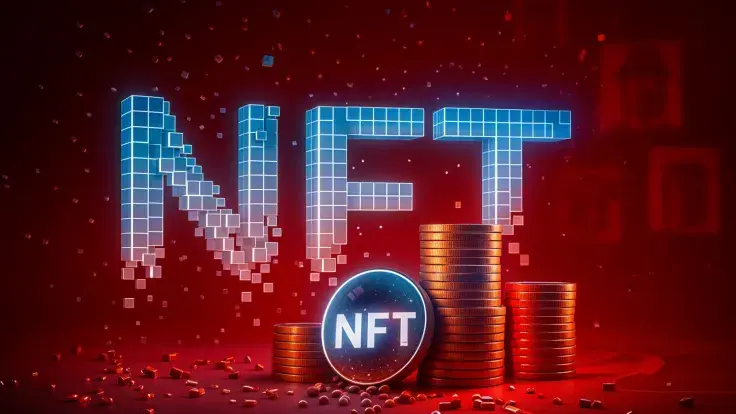
Disclaimer: The opinions expressed by our writers are their own and do not represent the views of U.Today. The financial and market information provided on U.Today is intended for informational purposes only. U.Today is not liable for any financial losses incurred while trading cryptocurrencies. Conduct your own research by contacting financial experts before making any investment decisions. We believe that all content is accurate as of the date of publication, but certain offers mentioned may no longer be available.
On March 11th, 2021, Beeple’s ‘The First 5000 Days’ NFT sold for $69 million, kicking off one of the wildest speculative frenzies in the history of an industry synonymous with speculative frenzies.
By April of the next year, the floor price of a Bored Ape NFT neared half-a-million dollars. You couldn’t get an Uber in Rochester, let alone Manhattan, without your driver mentioning the latest drop. Mythical brands from Nike to Louis Vuitton were going all in–crypto’s mainstream adoption had finally arrived.
And then, the bottom fell out of the market.
NFT monthly trading volumes plummeted from a $5 billion peak in January 2022 to $36 million. Earlier this year, Bybit, Kraken and X2Y2 shut down their NFT marketplaces. X2Y2 didn’t mince words, citing “the 90% shrinkage of NFT trading volume from its peak” as the death knell.
After years in the NFT trenches as an investor, community member and advisor, I've reached an uncomfortable conclusion: NFTs are structurally designed to fail. Not because their creators are scammers, but because their economic foundations rest on digital quicksand.
Here’s why, and what might save them.
The structural death spiral
Building businesses on artificial scarcity is not new. Designer goods have made Bernard Arnault, the CEO of Louis Vuitton Moet Hennessy, one of the world’s richest men. And De Beers diamonds (despite healthy criticism of their market manipulation) is a $35 billion empire.
And yet NFTs, despite mathematically guaranteed scarcity, haven’t held up. The reason? They are caught in a perfect storm of unsustainable economics. Relying on one time drop revenue and fading trading royalties.
Without a source of recurring revenue and the ongoing expense of a large hype machine, cash reserves inevitably fade, founders move on and the community is left with an empty shell.
Founders aren't always to be blamed especially when global decentralized communities are conditioned to expect incentives, benefits and handouts. They become a liability for sustained engagement burning away the very reserves they helped to establish. Thus, community alone isn't enough to weather the storm. The hard truth is that digital interaction cannot replace the power of a functional and engaging product.
Strip away the marketing buzz, and what remains? A digital image that can be right-clicked and saved by anyone. Humans seek fulfillment through beauty, status, and community. Traditional art, fashion, and social clubs have delivered these for centuries without blockchain validation. The novelty of NFT ownership isn't enough to compete with these entrenched alternatives.
Finding what works
However, all is not lost in the NFT world. New projects are finding success and market share in an industry most collectors have stepped back from.
The question then becomes: Is it possible to launch a new collection in todays’ market?
The answer: Possibly so, but one should carefully consider the market and strategy before doing so.
Should you NFT?
Before jumping into NFT production, the most important step is deciding whether to issue an NFT at all. If your goal is simply to sell a profile picture (PFP), avatar, or collectible art, understand the landscape you’re entering. The NFT ecosystem is already saturated, with thousands of collections and over ten million unique NFTs already in circulation. Visibility is scarce, and there are arguably more NFTs than active buyers today. Without meaningful utility and functional value, you’re unlikely to find traction in today’s market.
Emulate the best
If you’re still committed to launching a collection, take lessons from the most successful projects. While you can’t control factors like being the first to market or launching during a bull run, you can still position yourself for long-term success by focusing on the fundamentals.
Below are the Top 5 aspects shared by the most successful blue chip NFT projects:
1. Build an independent community
The best NFT projects cultivate strong independent communities. While a dedicated Discord gives holders a place to gather, organize, and form identity-based microcultures - the best projects find meaning in their communities through participation-based governance and DAOs. The ability to serve as long-term stewards of the brand, community and capital have the potential to foster interest and advocacy far beyond the initial sale.
2. Deliver real utility
NFTs that offer tangible or digital utility consistently outperform those that don’t. Whether it’s deeper integration into your existing products, conversion to physical assets, or gated access to in real life (IRL) activations, online content, decentralized applications, staking incentives, games, or metaverse environments, giving your NFT holders a reason to engage creates staying power.
3. Curate exclusivity
Don't overdo it. While it's tempting to launch and sell multiple collections to raise cash, oversupplying the market means there's no scarcity in the secondary market, causing resale prices to plummet. This disenfranchises the very community you're trying to preserve.
4. Launch a fungible token
A fungible token can provide added liquidity and incentive to participate in your ecosystem. When designed properly, these tokens become spendable within your product or service suite, deepening engagement and creating additional economic activity. Just as importantly, a successful token launch can increase the ecosystem value and provide capital for continued operations well after a bull market has gone.
5. Market and promote
Visibility matters. The best projects create demand by driving awareness to their project. Partnering with like-minded brands, or a celebrity influencer who resonates with your audience can create legitimacy and drive demand. Partnerships like these can catalyze attention and build momentum, particularly in the early days post-launch. Without a vibrant and growing audience, even the best projects will struggle to gain market adoption in an already crowded space.
Think through your economics
Be realistic about your economics. Your initial mint will likely be a one-time capital event, and ongoing royalty income should be considered negligible in today’s market. Plan accordingly. NFTs should not be treated as a long-term cash cow, but rather as a digital extension of your brand—tools for engagement, not just fundraising. If you have an existing business with cash flow, you will be less dependent on the collections' revenue to operate. If you're dependent on the success of the collection to operate - stretch your budget and maximize your capital by spending on awareness. The community events and parties can wait.
Finding success in today's market
While the broader NFT market remains in a slump, it’s far from dead. Newer projects are finding success by prioritizing utility (Courtyard), generating revenue (Metawin), or leveraging established design credibility (Vibes). The next generation of NFT projects will likely succeed not by hype or collectibility, but by thoughtful integration into brand ecosystems and driving real world functional value.
 Dan Burgin
Dan Burgin Vladislav Sopov
Vladislav Sopov U.Today Editorial Team
U.Today Editorial Team